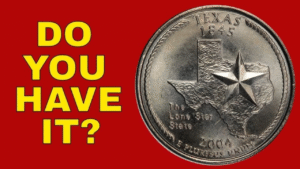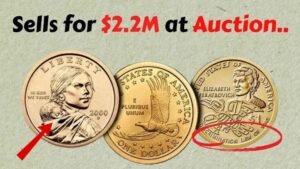1976 Bicentennial Quarter: Imagine finding a quarter in your pocket worth $97 million! The 1976 Bicentennial Quarter, made to celebrate America’s 200th birthday, is a common coin, but rare versions with errors or special features have sold for huge amounts. One is rumored to be worth $97 million, though experts say that’s likely exaggerated. This article explains in simple words why some are so valuable, how to spot them, and where to look. Check your quarters—you might have a treasure!
What Is the 1976 Bicentennial Quarter?
The 1976 Bicentennial Quarter was minted in 1975 and 1976 to mark 200 years of American independence. It features George Washington on the front with a “1776-1976” date and a colonial drummer boy with 13 stars on the back, designed by Jack L. Ahr. Over 1.6 billion were made in Philadelphia (no mint mark), Denver (“D”), and San Francisco (“S”), so most are worth just 25 cents. But rare errors or silver versions can be worth thousands or even millions.
Why Are Some Worth So Much?
Certain 1976 quarters are valuable due to:
- Minting Errors: Mistakes like double stamping or wrong metal.
- Silver Content: Some San Francisco coins have 40% silver.
- Condition: Shiny, unworn coins are worth more.
- Rarity: Unique errors or perfect grades are super rare.
The $97 million claim is likely a myth, possibly tied to a unique silver error coin. The highest confirmed sale was a 1976-S silver proof for $19,200, but rumors fuel excitement.
The $97 Million Quarter: Fact or Myth?
The $97 million valuation likely stems from online hype about a one-of-a-kind 1976 quarter, possibly struck on a 90% silver planchet with dramatic errors. No public sale has reached this amount, but rare error coins have sold for tens of thousands. For example, a 1976-S silver proof sold for $13,500 in 2019, and a double-struck quarter on a dime planchet fetched $9,200 in 2020. The $97 million figure is unverified, but it keeps collectors hunting.
Top 4 Most Valuable 1976 Bicentennial Quarters
Here are the top rare quarters to look for:
1. 1976-S Silver Proof (PR70 Deep Cameo)
- Why Rare: Struck in 40% silver with a mirror-like finish.
- How to Spot: “S” mint mark, shiny surface, no wear.
- Value: $6,000–$19,200.
2. 1976-D Double-Die Obverse
- Why Rare: Blurry text or date from double stamping.
- How to Spot: Check “LIBERTY” or “1776-1976” for doubling with a magnifying glass.
- Value: $20,000–$35,000.
3. 1976 No Mint Mark (MS70)
- Why Rare: Perfect condition, no scratches, from Philadelphia.
- How to Spot: No mint mark, looks untouched.
- Value: Up to $2.8 million (rare).
4. 1976 Off-Center Strike
- Why Rare: Design is misaligned, missing parts.
- How to Spot: Look for shifted or partial designs, 50% off-center is best.
- Value: $1,000–$3,000.
| Quarter Type | Key Feature | Mint Mark | Estimated Value |
|---|---|---|---|
| 1976-S Silver Proof | 40% silver, mirror-like | S | $6,000–$19,200 |
| 1976-D Double-Die | Blurry text or date | D | $20,000–$35,000 |
| 1976 No Mint Mark MS70 | Perfect condition, no scratches | None | Up to $2.8M |
| 1976 Off-Center Strike | Misaligned design | Any | $1,000–$3,000 |
How to Spot a Valuable 1976 Bicentennial Quarter
To find a rare quarter:
- Check the Date: Look for “1776-1976” on the front.
- Find Mint Marks: “S” (San Francisco), “D” (Denver), or none (Philadelphia).
- Inspect for Silver: Silver coins are shinier, heavier (6.3 grams vs. 5.67 grams), with no copper edge.
- Look for Errors: Use a magnifying glass for doubled text or off-center designs.
- Check Condition: Unworn, shiny coins are worth more.
Where to Find These Quarters
You might find them in:
- Pocket Change: Some still circulate, especially non-error coins.
- Coin Rolls: Get quarter rolls from banks to search.
- Old Collections: Check family coin jars or inherited stashes.
- Coin Shops or Auctions: Visit dealers or check eBay, Heritage Auctions, or GreatCollections.
What to Do If You Find One
- Don’t Clean It: Cleaning can scratch or dull the coin, lowering its value.
- Store Safely: Use a plastic coin holder to protect it.
- Get It Graded: Take it to PCGS or NGC for authentication and grading.
- Sell Smart: Use auction houses (Heritage Auctions), dealers (APMEX), or eBay with clear photos.
Avoiding Fakes
Fakes exist, with some altering coins to mimic errors. Check:
- Material: Silver coins weigh 6.3 grams, copper-nickel 5.67 grams.
- Details: Look for natural errors, not carved or tampered designs.
- Professional Grading: Only trust PCGS or NGC to confirm authenticity.
Conclusion
The $97 million 1976 Bicentennial Quarter is likely a myth, but rare ones like the 1976-S silver proof ($19,200) or double-die errors ($35,000) could still be in your change, coin rolls, or old jars. Check for “1776-1976,” mint marks, silver content, or errors, and get finds graded by experts. Beware of fakes and enjoy the thrill of the hunt. Start searching your quarters today—you might uncover a treasure!
FAQ
Is a 1976 Bicentennial Quarter really worth $97 million?
No, that’s likely exaggerated. The highest confirmed sale was $19,200 for a 1976-S silver proof.
Which 1976 Bicentennial Quarters are valuable?
Silver proofs, double-die errors, no mint mark MS70, and off-center strikes are worth thousands.
Are these quarters still in circulation?
Yes, some appear in pocket change, bank rolls, or old collections, though rare errors are scarce.
How do I spot a valuable 1976 quarter?
Check for “1776-1976,” mint marks (“S” or “D”), silver content (shinier, heavier), or errors like doubling.
What should I do if I find a rare quarter?
Don’t clean it, store it in a coin holder, get it graded by PCGS or NGC, and sell via auctions or dealers.



